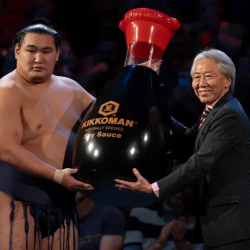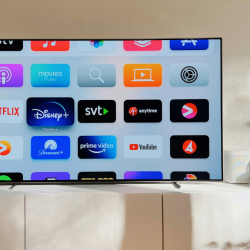With Washington set to pull the plug on TikTok in the US this Sunday over concerns about Chinese government influence, more than half a million Americans have turned to another Chinese-owned social media platform, Xiaohongshu.
Meaning ‘Little Red Book’ in Mandarin and known as RedNote in the West, the app has held the top spot on Apple’s App Store since Tuesday.
Projected to generate over $1 billion USD in profit in 2024, Xiaohongshu boasts over 300 million active users, predominantly in China. The International Business Times reported that number grew by 700,000 in just two days this week, as downloads in the US soared over 200% YoY, up 194% from the week prior.
Sustaining this global momentum is no small feat. Developers will have to act fast to address the app’s Mandarin-dominated interface and implement robust moderation for English-language content. Lemon8, another property of TikTok-parent ByteDance, now sits second on the App Store charts.
This shift comes one week after Meta CEO Mark Zuckerberg’s controversial pivot to remake his platforms for the Trump era. Is this mass migration across the Great Firewall a fleeting digital protest, or will this moment propel Chinese brands to new global heights?
Xiaohongshu is not a functional replacement for TikTok
‘It’s not primarily a place where the Chinese share their funny videos and dance moves,’ Ed Sander, research editor at Tech Buzz China, told MediaCat. “They have Douyin and Kuaishou for that.’
Since its 2013 launch, Xiaohongshu has become one of China’s top social platforms. It caters to an audience of predominantly affluent, educated young women seeking product reviews, travel advice, and fashion and beauty tips, from other users — a sharp contrast from TikTok’s entertainment-led content, or Meta’s more traditional network-led platforms.
For brands, Xiaohongshu offers distinct advertising products aligned to this content-first ethos. Influencers, known as Key Opinion Leaders (KOLs), are ‘more important than a specific video that gets pushed by the algorithm,’ says Sander, and ad formats enable businesses to partner with these influencers on in-depth product reviews, tutorials and giveaways — content that feels organic and community-led.
The platform’s ecosystem is designed to guide users from discovery to transaction organically, with Search Ads surfacing relevant products at moments of intent, and Feed Ads that feel like natural recommendations rather than intrusive promotions.
Additionally, creators can sell directly through their content, allowing Xiaohongshu to blur the lines between influencer-led discovery and direct sales in a way that Western platforms like TikTok and Instagram are only beginning to explore.
‘Whenever I need suggestions — whether for product research, travel advice, or other topics — I instinctively turn to this app over others,’ Harriet Pan, a Guangzhou-based brand strategist at Bandalabs, told MediaCat.
Sander warns against ignoring these nuances: ‘Just like people dislike Facebook-like content on LinkedIn, if Americans start posting TikTok/Douyin-like content on Xiaohongshu, it won’t be appreciated.’
Could Xiaohongshu’s model shake up US social commerce?
‘Western platforms focus on one type of monetisation: advertising,’ notes Sander. ‘In China, platforms diversify into e-commerce, local services such as group buying and meal delivery, and live streaming entertainment, where users tip content creators.’
Olivia Plotnick, founder of social media agency Wai Social, observes that ‘users see far fewer ads than on Instagram and that, ‘instead, you’ll see Key Opinion Leaders or celebrities pushing brand endorsements.’
MediaCat reached out to Plotnick to understand how Xiaohongshu accommodates foreign brands and advertisers, particularly those operating across borders.
US and European brands are already active on the platform, says Plotnick, though she cautions against diving in without preparation. ‘Foreign brands can apply for verified accounts as a foreign entity, but might need certain certification documents or an actual business entity in China. Given the current state of uncertainty, I wouldn’t suggest that brands rush the platform — let things play out.’
Xiaohongshu’s rise introduces many US netizens to China’s ‘super apps’ for the first time. Despite the multi-billion dollar success of WeChat and Alipay in Asia, super apps have yet to crack the code on US soil. Strict privacy regulations, antitrust laws, and fears of monopolistic practices have hindered adoption. Americans have historically preferred apps that excel at singular functions, yet the rise of super-app-like ecosystems — think Uber’s diversified travel or Spotify’s audio offerings — signals a push towards the adoption of super-app like products.
The broader question, then, is whether consumers’ burgeoning awareness of Chinese e-commerce trends will evolve into an appetite Western brands must address. Xiaohongshu’s rise comes as Gen Z, already using TikTok and Pinterest for shopping inspiration, seeks more ‘frictionless commerce’. Even if super apps remain elusive, the platform’s unobtrusive approach to monetisation could provide a roadmap for reshaping social strategies closer to home.
For China, does this trend spell more risk than reward?
‘Xiaohongshu wasn’t built with Western users in mind, and rapidly adapting to their expectations would require significant investment and infrastructure changes that may not align with their current focus,’ Plotnick told MediaCat.
She adds, ‘For the past few years, Xiaohongshu has been putting a lot of effort into making the company profitable and is rumoured to be looking at an IPO in Hong Kong. I have doubts they would want to jeopardise those efforts by pivoting the business.’
Cultural clashes further complicate potential expansion, with discussions on LGBTQ+ sentiments and firearms already testing censorship. Sander speculates that ‘an influx of male Americans could unbalance the friendly, predominantly female community’ and that some ‘have already been commenting on the audacity of some US males.’
It’s worth noting that TikTok’s US audience skews 60% female, although no demographic data for Xiahongshu’s new American user base exists at this time.
For the government, the platform’s new global prominence poses an entirely different set of challenges. ‘What makes this particularly thorny for Chinese authorities is that this isn’t just about controlling information flow within China — the whole world is watching,’ Plotnick writes.
Despite these challenges, the moment presents organic, free exposure to Chinese brands with international ambitions. Beijing-based Luckin Coffee, which plans a US launch this year, has already started engaging Western users on the platform. Yet its use of the #TikTokRefugee hashtag was mocked by Chinese netizens, illustrating the precarious balancing act of appealing to global consumers while avoiding alienating domestic audiences.
Sander suggests that these tensions, combined with growing pressure from users and authorities, could ultimately force Xiaohongshu to separate its global and domestic operations ‘in Douyin-TikTok style, effectively separating the two groups.’
It seems this shift is already underway. According to The Information, ‘Chinese officials raised the issue with RedNote’s government relations team earlier this week, warning that the company needs to ensure China-based users can’t see posts from US users.’
TikTok user @abbysijing revealed that Xiaohongshu rolled out a function on Wednesday to route foreign IPs to separate servers. She is just one of the many Chinese American users sharing concerns around new restrictions limiting future access to the platform, leaving them reliant on VPNs to maintain cultural ties.
Will 19 January mark a new era of social media?
Should TikTok go dark on Sunday, US lawmakers may shift focus to Xiaohongshu over similar security concerns. Whether the hype will continue long enough to warrant this response remains to be seen. Either way, a precedent has been set for politicians to use these platforms as means to protect their markets or assert geopolitical dominance.
Most tellingly, the US government’s data privacy concerns have been met with mockery. Across TikTok and Xiaohongshu, users from both countries are sharing jokes about data theft and terms and conditions, which Americans have accepted to access the platform despite being in Mandarin.
This exchange has fostered an unexpected cross-cultural camaraderie. Duolingo noted a 216% spike in US users learning Mandarin this week, poking fun in posts on TikTok and X.
These interactions remain largely wholesome, evoking the early, idealistic days of social media; a stark contrast to X and Meta, both of which seem increasingly out of touch with users’ priorities. As one TikTok remarked, ‘They don’t ban any American company from stealing our information.’ While this point stands, it’s worth noting that in China the government plays a stronger role within private companies.
Increasingly, American netizens are sharing their shock as conversations with Chinese users reveal much of what they’ve been fed from US media doesn’t hold up.
With the ban just days away, TikTok’s fate hangs in the balance. An intervention from the incoming president, Donald Trump, could grant the platform a temporary lifeline, but the broader question remains: how will this standoff reshape social media and global dynamics? As Meta and X consolidate influence and align more closely with Trump ahead of his second term, the spectre of monopolistic control looms large over US media.





















